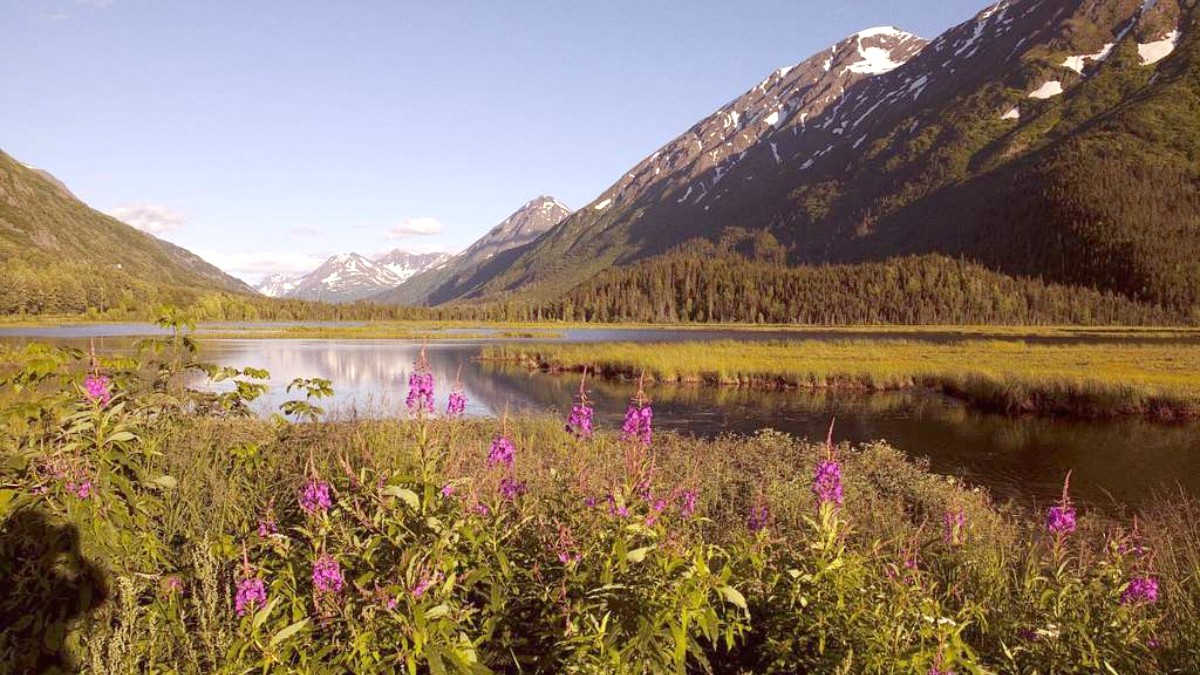
Alaska, USA
Prepare to discover a place where every view is a postcard, and every activity brings you closer to the heart of Alaska. Your journey into the Alaskan wilderness, framed by the calm waters of the bay and the rugged peaks, starts here.
Seward’s story is intertwined with Alaska's broader history, reflecting periods of exploration, resource development, and resilience. Founded in 1903, the city bears the name of William H. Seward, the U.S. Secretary of State who orchestrated the purchase of Alaska from Russia in 1867. This event, initially dubbed "Seward's Folly," proved to be a stroke of geopolitical genius, opening up vast territories rich in resources.
Seward quickly established itself as a place of immense strategic importance. It became the original southern terminus for the Alaska Railroad, a monumental project that connected the ice-free port of Seward to the interior of Alaska, reaching as far as Fairbanks. This railway was a lifeline during the early 20th-century gold rushes. It transported prospectors, supplies, and ore, contributing to the economic development of the entire territory. Seward’s role as a major transportation hub cemented its place in Alaskan history.
The 2020 U.S. Census recorded Seward's population at 2,773 residents. This population swells significantly during the peak summer tourism season with seasonal workers and visitors.
Seward operates on Alaska Standard Time (AKST), which is UTC-9. During daylight saving time, it shifts to Alaska Daylight Time (AKDT), UTC-8. Be aware of this time difference, especially if you arrive from other parts of the United States.
English
Tourism, Commercial Fishing, Port Services
A deep fjord, for tourism and fishing.
Accessible by boat or road.
A nearby accessible glacier.
On March 27, 1964, the Great Alaska Earthquake, the second strongest recorded earthquake in history, struck. Seward was among the communities most severely affected. The earthquake triggered massive landslides and a devastating tsunami that engulfed much of the city, destroying its port facilities and numerous buildings.
Today, Seward embraces its maritime past and its role as a fishing and tourism center. Historical murals adorn buildings downtown, depicting moments from its railroad past, its early days, and the rebuilding efforts after the earthquake.
Visitors can feel the echoes of its history in the downtown streets and at the bustling harbor, where fishing boats and tour vessels continue to ply the waters that have shaped Seward for over a century.
Seward's identity is defined by its stunning natural surroundings.
Alaska's weather patterns influence available activities and crowd levels.
Warmest months, 50-65°F (10-18°C), frequent rain, long daylight (up to 19 hours).
Temperatures drop, 35-55°F (2-13°C), precipitation continues, fall colors appear.
Mild for Alaska, 15-35°F (-9-2°C), frequent heavy snowfall, short daylight (as little as 6 hours).
Seward experiences no monsoons or hurricanes. Extreme temperatures occur, with winter lows dropping below 0°F (-18°C) and summer highs occasionally above 70°F (21°C). Rain accompanies summer visits. Pack waterproof outer layers.
Seward is in the United States. Entry requirements relate to your citizenship.
Your entry requirements relate to your citizenship. U.S. Citizens do not need a visa or passport for Alaska, but a valid government-issued photo identification is common for air travel.
Gather all necessary documents. This includes your valid passport, U.S. Visa or ESTA authorization, and proof of a return or onward ticket from the U.S. Financial resources to support your stay are also helpful to have documented. No specific entry fees beyond visa/ESTA application costs. Immigration procedures take place at your first U.S. Port of entry (e.g., Anchorage Airport).
Gather all necessary documents. This includes your valid passport, U.S. Visa or ESTA authorization, and proof of a return or onward ticket from the U.S. Financial resources to support your stay are also helpful to have documented.
No specific entry fees beyond visa/ESTA application costs. Immigration procedures take place at your first U.S. Port of entry (e.g., Anchorage Airport).
Not typically needed for standard tourist activities. Commercial activities or large events may require permits from National Park Service or U.S. Forest Service.
Check if special permits are necessary for any activities beyond standard tourism.
Verify requirements with official sources for specialized activities.
Currently, no specific health requirements for U.S. Entry. No vaccination mandates or testing.
Verify current requirements with official U.S. Government sources.
Policies can change. Stay informed closer to your travel date.
Do not delay ESTA or U.S. Visa application. Processing times vary, and approval is not guaranteed.
Plan your visa application well in advance of your trip.
Last-minute applications may cause delays or denial of entry.
June through August conditions favor marine mammals like whales, puffins, and sea otters. Tour operators run frequent schedules. Trails to Exit Glacier are generally accessible from May through September. Early summer allows viewing of both snow and ice.
Salmon runs are strong from June through September. Halibut fishing is good throughout summer. Dry-land cart tours operate May through September near Exit Glacier. Snow-based tours are available November through April, offering a traditional dog sled experience.
Alaska travel can be more expensive than other parts of the U.S., especially during the summer.
Expect $30-$60 for hostel dorms or campsites. Food costs are $30-$50 for groceries, casual diners, or fast food. Transportation is $0-$20 for walking or the free summer shuttle. Activities are $0-$70, focusing on free options like hiking or waterfront exploration.
Plan $100-$250 for a mid-range hotel, motel, or B&B. Food is $50-$100 for a mix of casual and sit-down restaurants. Transportation is $30-$80, possibly a rental car or occasional taxis. Activities are $50-$150, including a Kenai Fjords wildlife cruise or the Alaska SeaLife Center.
Travel in Shoulder Season (May or September) for fewer crowds and lower prices for accommodation and tours. Book in advance for the peak summer season. Cook your own meals and utilize Seward's grocery store (QFC). Prioritize free activities like self-guided hikes to Exit Glacier or waterfront walks.